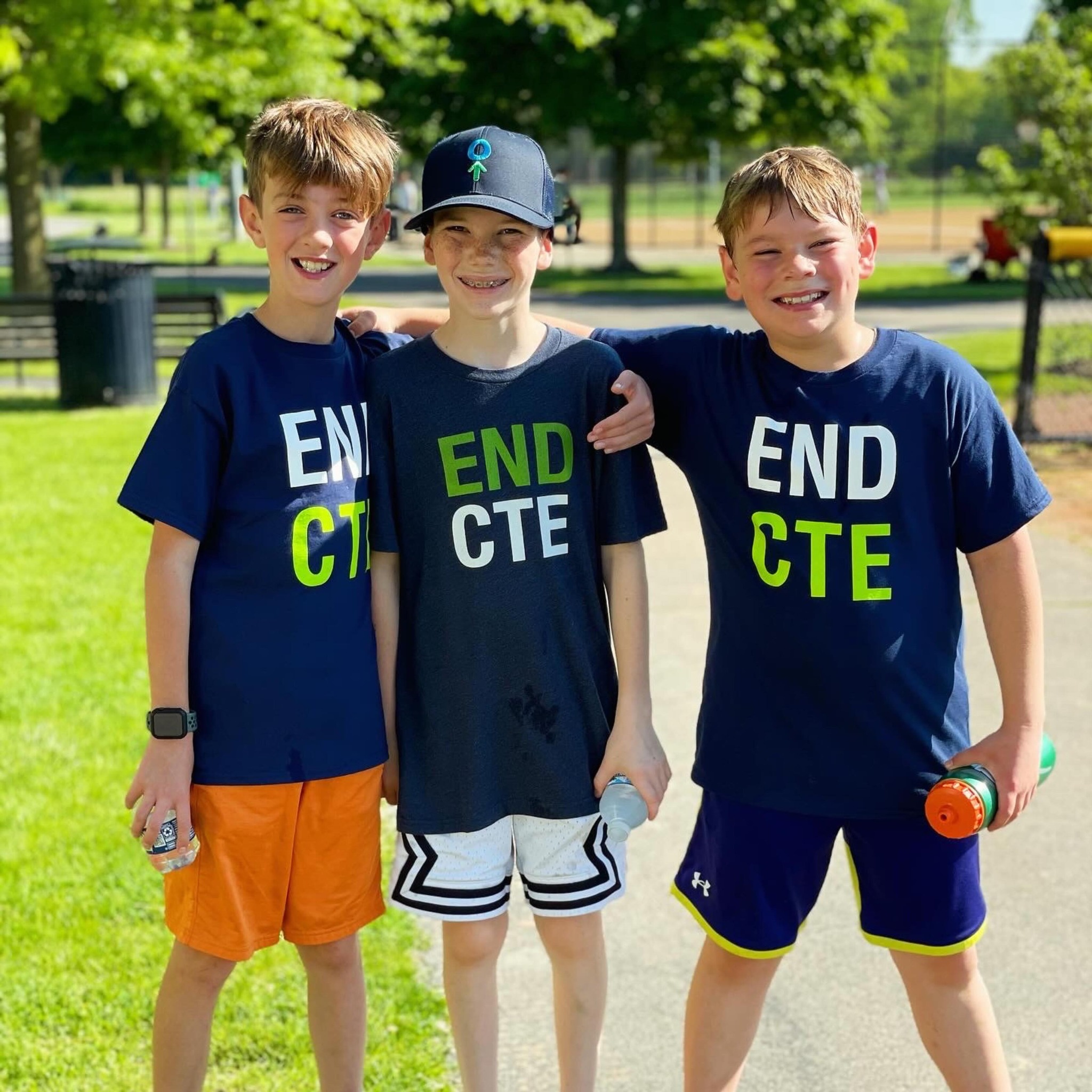Nonconcussive Impacts
The best available evidence suggests that nonconcussive impacts, not concussive impacts, are the driving force behind CTE.

The driving force behind Chronic Traumatic Encephalopathy (CTE)
Many people are surprised to hear that there have been cases of CTE discovered in athletes who have never been diagnosed with a concussion. This revelation has spurred some scientists to look at other types of brain trauma as a possible cause of CTE.
Currently, the best available evidence suggests that nonconcussive impacts, not concussive impacts, are the driving force behind CTE. In fact, the odds of developing CTE seem most related to the number and strength of head impacts experienced over a lifetime.
What is a nonconcussive impact?
A nonconcussive impact is simply a hit to the head that does not result in a diagnosed concussion. A concussion is a type of traumatic brain injury that results in signs that are observable (loss of consciousness, loss of balance, disorientation) or symptoms that are felt (headache, dizziness, double vision, amnesia, feeling foggy). Most head impacts do not cause signs or symptoms of concussion, and therefore are nonconcussive.
Examples of these types of impacts include most tackles and collisions on the football field; headers in soccer; checks or collisions with the boards or other players in ice hockey; and body checks in lacrosse.

Do nonconcussive impacts damage the brain?
Yes, scientific evidence suggests some nonconcussive impacts cause subclinical traumatic brain injury (TBI). A subclinical TBI does not cause classic concussion signs or symptoms, but can cause changes to brain biomarkers, imaging, or function.
Think of it this way: the human brain has around 86 billion neurons – what are the odds that you’d feel one neuron being injured? We don’t know how many neurons need to be injured to result in signs or symptoms – or where in the brain neurons need to be injured to result in specific symptoms.
You can think of CTE like an overuse injury. Baseball pitchers who throw too much eventually might need “Tommy John surgery” due to all the microtrauma that leads to wear and tear on a ligament in their elbow. They never had a big injury to the elbow, but it wore out all the same.
CTE may be occurring the same way – it’s not a single injury that causes the disease, but instead accumulation of microtrauma from thousands of hits over years. The big difference is that we’ll never have a surgery that will fix your brain, so it’s important to try to prevent CTE by limiting exposure to head impacts – just like pitch counts in baseball help prevent elbow injuries.

Are nonconcussive hits the same as subconcussive hits?
We no longer use the term subconcussive because we believe it is misleading. The prefix sub- implies impacts less than concussion and has led to experts talking about the “repeated smaller head impacts” as a risk factor for CTE and other outcomes.
But a new analysis of published data led by CLF neuroscientists has revealed that most concussions are not the hardest head impacts experience by athletes. Studies have shown that the average concussive impacts are around the 90th percentile of acceleration experienced by an athlete over a season.
To say it another way, if a football player experiences 1,000 head impacts in a season, and they are diagnosed with one concussion, they likely experience up to 100 nonconcussive impacts harder than the concussion. Football players are rarely diagnosed with a concussion every season, and one study of college football players showed that for every concussion experienced, a player experiences 340 head impacts of greater magnitude.
This is why CLF encourages using the term nonconcussive rather than subconcussive. While “repeated smaller head impacts” are discouraged, we should really be focused on minimizing the “repeated bigger head impacts.”
How do we know nonconcussive impacts are dangerous?
In the last several years, research groups using helmet-mounted accelerometer devices have helped us understand how nonconcussive impacts add up to brain damage. This technology allows scientists to count how many hits an athlete takes over a period of time, how hard the hits are, and how much rest an athlete gets between hits. Scientists can use this information to compare athletes with lots of hits to athletes with fewer hits, or to people who haven’t been hit at all.
Another benefit of this type of research is that it allows scientists to take out athletes who have had concussions, allowing them to focus only on the effects of nonconcussive impacts. By comparing athletes with lots of hits to athletes without hits, scientists can isolate the effect that hits have on a variety of different things, from an athlete’s memory and thinking ability to the strength of the physical connections in the brain. The picture is pretty clear: too many hits is not a good thing.
Here’s what we’ve learned:
Nonconcussive head impacts are correlated with the presence and severity of CTE.
A study of 631 deceased football players revealed that the odds of having CTE was related to the estimated number and strength of impacts to the head, but not related to the number of diagnosed, self-reported or family-estimated concussions.
Nonconcussive hits hurt our memory and attention.
Several studies have shown that athletes who suffer more nonconcussive impacts do worse on memory and attention tests than their teammates who suffer fewer hits.
Nonconcussive hits damage the connections in our brain.
Different areas of the brain are interconnected by bundles of wire-like brain cells, allowing them to seamlessly communicate. Using a technique called Diffusion Tensor Imaging (or DTI), scientists can see these connections, and measure their structural strength. Too many nonconcussive impacts can damage the structure of these wiry connections, making it harder for brain areas to communicate.
Nonconcussive hits suppress brain function.
Using a technique called functional magnetic resonance imaging, scientists can see how active different brain areas are during thinking or memory tasks. Studies in contact athletes have shown that athletes with more nonconcussive impacts have less brain activity than athletes with fewer impacts.
Sign up to stay informed on new research & treatments with the CTE Resources Newsletter
"*" indicates required fields
How can we prevent
nonconcussive hits?
Limiting nonconcussive impacts is a great way to make sports safer. At the Concussion Legacy Foundation, we advocate for three pillars to reduce the number of nonconcussive impacts athletes are exposed to.

Delay the introduction of contact (age-appropriate rules).
Athletes who have longer careers in contact or collision sports suffer more nonconcussive impacts, and athletes who start earlier tend to have longer careers. By delaying the introduction of contact or collisions (through rule changes for youth divisions), we can limit the time an athlete has to accrue damage.

Eliminate contact where unnecessary.
Research using Hit Counting devices has shown that in many sports, the majority of head impacts occur during practice. By altering drills and practice structure to eliminate contact when it is not completely necessary, we can chip away at the lion’s share of nonconcussive hits in sports without changing gameplay at all.

Modify contact where appropriate.
Some practice contact is necessary for athletes in contact and collision sports to learn how to protect themselves and their opponents from serious injury. In these cases, limiting the repetitions to the minimum necessary to achieve particular learning points is a great way to prevent needless injury. A thoughtful approach to drills and practices can go a long way!
Learn more about our education and advocacy programs designed to prevent nonconcussive hits.

